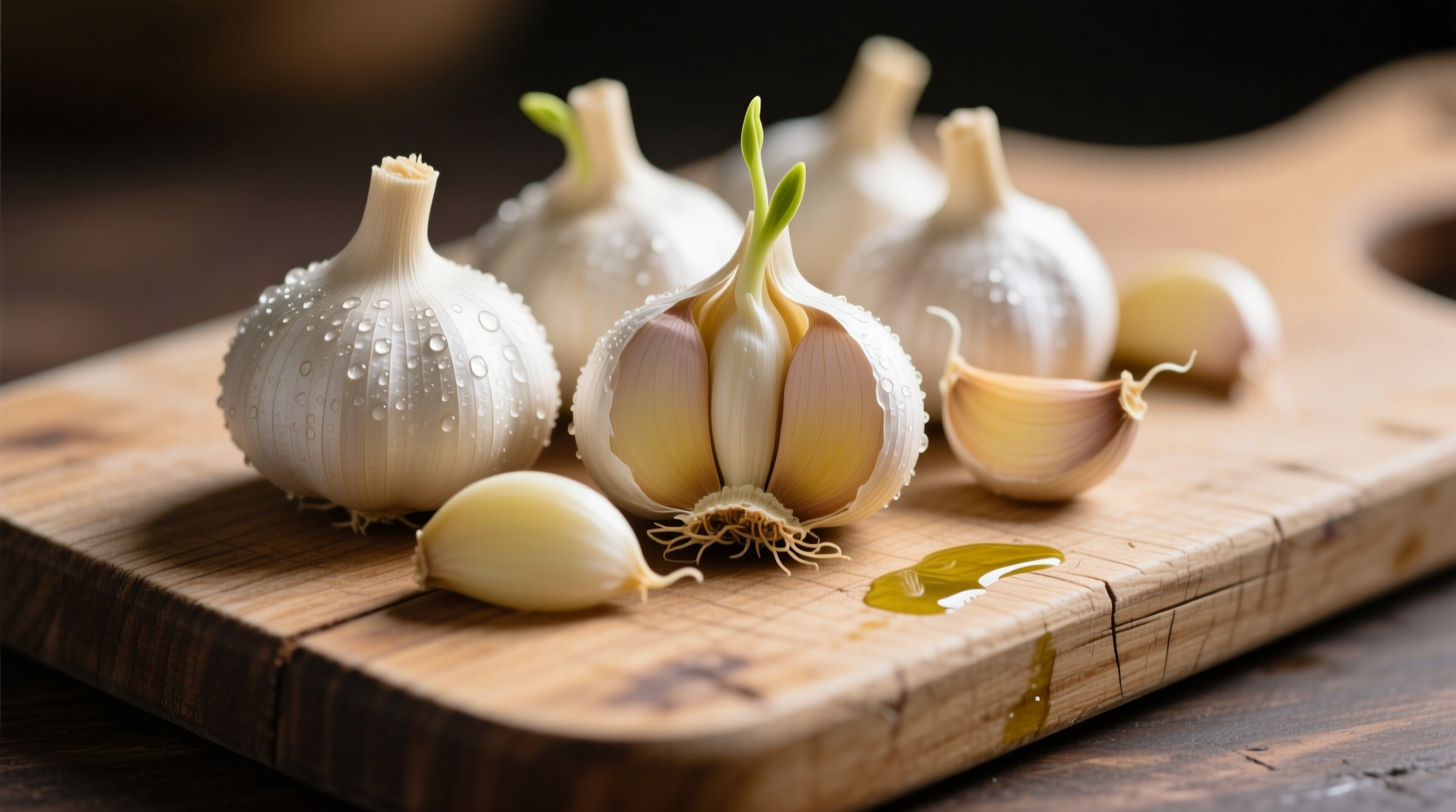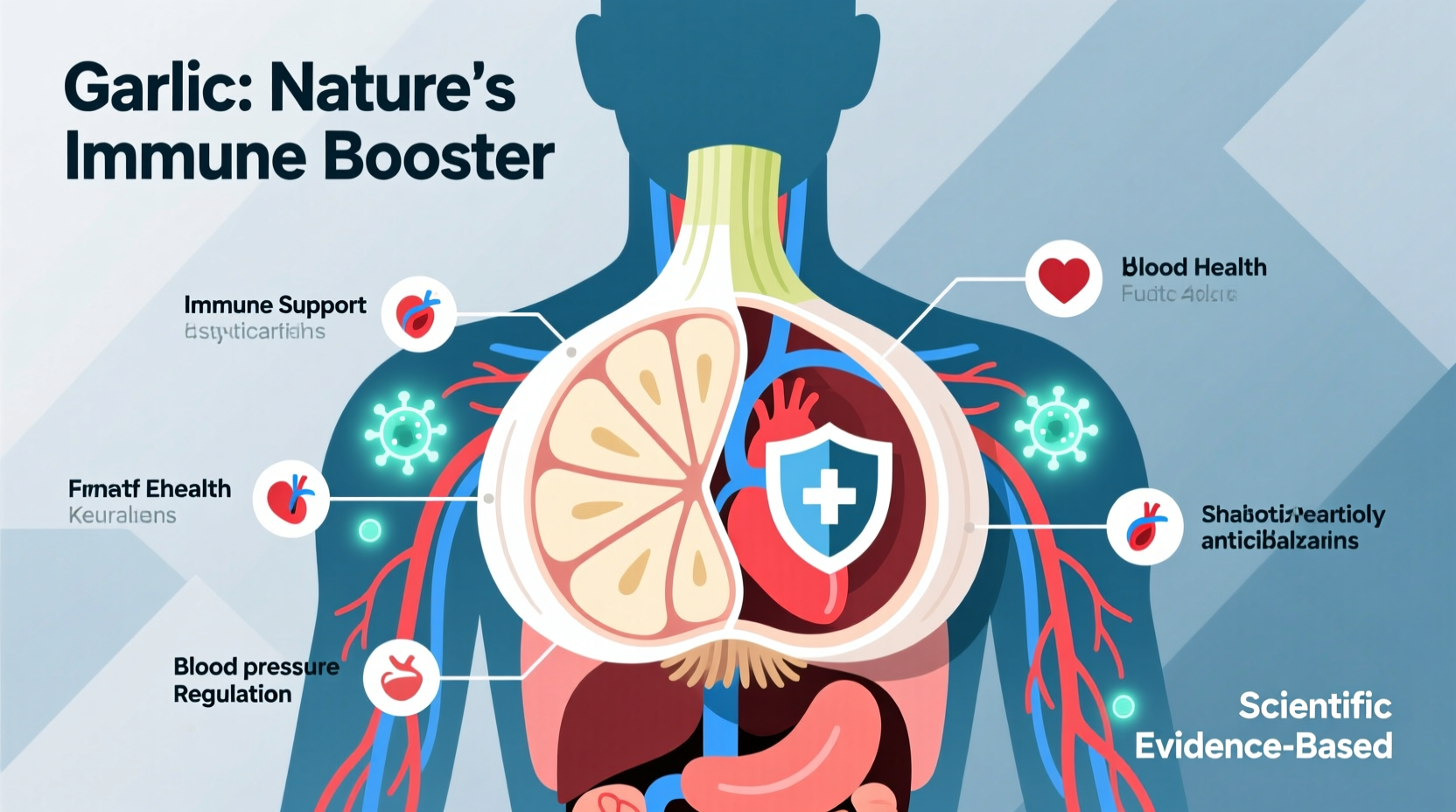Based on current scientific research, garlic offers several proven health benefits including modest reductions in blood pressure (particularly in hypertensive individuals), improved cholesterol levels, enhanced immune function, and potent antioxidant properties. The most effective form is raw, crushed garlic consumed 10 minutes after preparation to maximize allicin formation, with a recommended daily intake of 2-5 grams (approximately 1-2 cloves).
For centuries, garlic has been revered not just as a culinary staple but as a medicinal powerhouse across diverse cultures. Modern science is now validating many of these traditional uses, revealing the complex biochemical mechanisms behind garlic's health-promoting properties. As a culinary historian who's traced garlic's journey from ancient Silk Road markets to contemporary kitchens, I've witnessed how this humble bulb continues to surprise researchers with its therapeutic potential.
The Bioactive Powerhouse: What Makes Garlic Work
When you crush or chop a garlic clove, you trigger a fascinating biochemical reaction. The enzyme alliinase converts alliin into allicin—the compound responsible for garlic's distinctive aroma and most of its health benefits. This transformation requires about 10 minutes to reach peak potency, which explains why letting chopped garlic rest before cooking maximizes its therapeutic value.
"The timing of garlic preparation significantly impacts its medicinal properties," explains Dr. John Milner, former chief of the Nutritional Science Research Group at the National Cancer Institute. "Consuming raw garlic 10 minutes after preparation yields substantially higher allicin levels than immediate cooking."
| Preparation Method | Allicin Availability | Key Benefits Preserved |
|---|---|---|
| Raw, crushed & rested 10 min | High (100%) | Antimicrobial, cardiovascular, immune support |
| Raw, immediate consumption | Moderate (60-70%) | Some antimicrobial activity |
| Cooked immediately after chopping | Low (10-20%) | Limited cardiovascular benefits |
| Cooked after 10-min rest | Moderate (40-50%) | Antioxidant properties, some cardiovascular |
Cardiovascular Benefits: What the Research Shows
Among garlic's most well-documented benefits is its positive impact on heart health. A comprehensive 2020 meta-analysis published in Experimental and Therapeutic Medicine reviewed 13 clinical trials involving 751 participants. The analysis revealed that garlic supplementation significantly reduced both systolic and diastolic blood pressure, with the most pronounced effects seen in individuals with hypertension.
The American Heart Association acknowledges garlic's potential role in cardiovascular health, noting that regular consumption may help lower LDL cholesterol by approximately 10-15% based on multiple studies. However, they emphasize that garlic should complement—not replace—standard medical treatments for heart conditions.

Immune System Support Through the Seasons
Garlic's immune-boosting properties have gained particular attention in recent years. Research from the Journal of Immunology Research demonstrates that aged garlic extract enhances immune cell function, particularly natural killer cells and gamma-delta T cells, which play crucial roles in our body's defense system.
A notable 2012 clinical trial followed 146 volunteers throughout cold season. Those taking aged garlic extract experienced:
- 21% fewer colds compared to placebo group
- 61% reduction in cold severity
- Significantly shorter duration of symptoms
Practical Application: Maximizing Garlic's Benefits
Understanding garlic's biochemistry is only half the battle—you need practical strategies to incorporate it effectively into your daily routine. Based on current research, here's how to optimize garlic consumption:
Daily Dosage Guidelines
The European Medicines Agency recommends 2-5 grams of fresh garlic daily (approximately 1-2 medium cloves) for general health maintenance. For therapeutic purposes related to cardiovascular health, studies typically use:
- 2-2.7 grams of aged garlic extract
- 600-1,200 mg of garlic powder
- 2-5 mL of garlic tincture
Preparation Techniques That Matter
The way you prepare garlic dramatically affects its health properties:
- Crush or chop garlic and let it rest for 10 minutes before cooking
- Add to dishes near the end of cooking to preserve heat-sensitive compounds
- Pair with lemon or vinegar to enhance allicin stability
- Combine with healthy fats like olive oil to improve absorption of fat-soluble compounds
Important Limitations and Considerations
While garlic offers impressive health benefits, it's crucial to understand its limitations and potential concerns:
Medication Interactions
Garlic may interact with several common medications, particularly:
- Blood thinners (warfarin) - garlic may increase bleeding risk
- HIV medications (saquinavir) - may reduce drug effectiveness
- Some birth control pills - potential reduction in effectiveness
The National Center for Complementary and Integrative Health advises consulting with a healthcare provider before significantly increasing garlic intake if you take any prescription medications.
Who Should Exercise Caution
Certain individuals should moderate their garlic consumption:
- People with bleeding disorders
- Those scheduled for surgery (stop 2 weeks prior)
- Individuals with gastroesophageal reflux disease (GERD)
- People with irritable bowel syndrome (IBS)
Evolving Research: Garlic's Future Potential
Scientific understanding of garlic's health benefits continues to evolve. A timeline of key research milestones reveals how our knowledge has expanded:
1980s: Initial studies identify allicin as garlic's primary bioactive compound
1990s: Research focuses on garlic's cholesterol-lowering effects
Early 2000s: Studies explore garlic's antimicrobial properties
2010s: Research expands to immune function and cancer prevention
2020s: Current studies investigate garlic's role in metabolic health and cognitive function
Recent research from the University of California shows promising preliminary results regarding garlic's potential neuroprotective effects, though more extensive human trials are needed before definitive conclusions can be drawn.
Separating Fact from Folklore
Garlic has accumulated numerous health claims throughout history. Current scientific evidence supports some traditional uses while debunking others:
- Supported: Cardiovascular benefits, immune support, antimicrobial properties
- Limited evidence: Cancer prevention (particularly stomach and colorectal cancers)
- Not supported: Treating established infections like colds or flu
- Myth: Garlic repels mosquitoes (studies show no significant effect)
As with any natural remedy, it's essential to maintain realistic expectations about what garlic can and cannot do for your health.
Your Garlic Integration Plan
Based on current evidence, here's a practical approach to incorporating garlic into your health regimen:
- Start with one raw clove daily, crushed and rested for 10 minutes
- Gradually increase to 1-2 cloves if well tolerated
- Pair with lemon juice or vinegar to enhance stability
- Combine with other allium vegetables (onions, leeks) for synergistic effects
- Monitor how your body responds and adjust accordingly
Remember that garlic works best as part of a balanced diet rich in fruits, vegetables, and whole grains—not as a standalone solution to health concerns.











 浙公网安备
33010002000092号
浙公网安备
33010002000092号 浙B2-20120091-4
浙B2-20120091-4